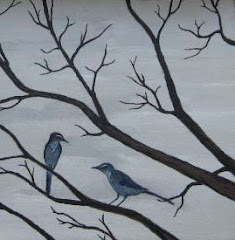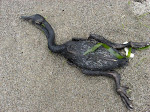Late last night, among the chatter of our neighbors, Sarah and I heard a pair of great-horned owls hooting to each other. For a moment, at least, it felt like we were out camping. A few hours later, I was partially awakened by a chorus of coyotes. At first glance, our neighborhood may not look like owl and coyote habitat, but a local business provides plenty of space for these and other wild species.
If you can read this post, then you have probably bought one of this companies products and indirectly subsidized our local owls and coyotes. The company is Intel and I guess they are not exactly local, but they do have four large campuses in Hillsboro and they probably employ most of the people in our apartment complex.

Their huge Ronler Acres campus is the closest one to our apartment and it contains several wetland and grassland patches just blocks from our window.

One one occasion, I spotted a coyote strolling through a grassy spot alongside employees out for a walk break. When driving at night, we sometimes see owls flying across the road to the campus.

While walking near the campus today, I spotted a young accipiter hawk perching on a street light. I think it was a Cooper's hawk, but without my binoculars I could not be sure. I almost always see red-tailed hawks and kestrels hunting the campus grounds.
Huge coprprations usually give me the creeps, but I am glad Intel is here to keep some good land from being strip-malled.
A few blocks later, I found a small maple tree with some interesting insects clinging to the trunk.

This spikey little guy is a ladybird beetle (ladybug) larva which, like adults, is a voracious aphid predator. I often find larvae on the leaves of ornamental trees gobbling up the tiny plantsuckers.

This pale item appears to be a larva that has attached its rear to the trunk and is begining to pupate.

This darker pupa is farther along.
After pupating, these beetles will overwinter as adults, eager to consume next year's batch of aphids.



























































